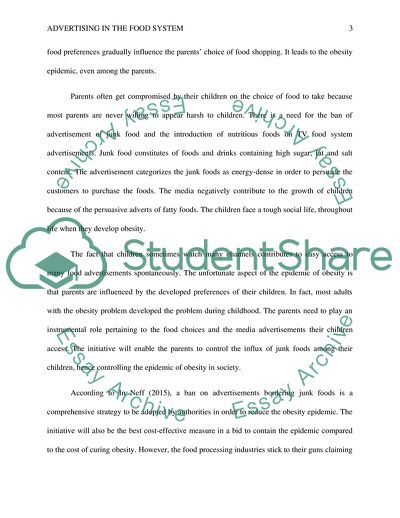Cite this document
(Advertising in the Food System Essay Example | Topics and Well Written Essays - 1750 words, n.d.)
Advertising in the Food System Essay Example | Topics and Well Written Essays - 1750 words. https://studentshare.org/sociology/1864478-advertising-in-the-food-system
Advertising in the Food System Essay Example | Topics and Well Written Essays - 1750 words. https://studentshare.org/sociology/1864478-advertising-in-the-food-system
(Advertising in the Food System Essay Example | Topics and Well Written Essays - 1750 Words)
Advertising in the Food System Essay Example | Topics and Well Written Essays - 1750 Words. https://studentshare.org/sociology/1864478-advertising-in-the-food-system.
Advertising in the Food System Essay Example | Topics and Well Written Essays - 1750 Words. https://studentshare.org/sociology/1864478-advertising-in-the-food-system.
“Advertising in the Food System Essay Example | Topics and Well Written Essays - 1750 Words”. https://studentshare.org/sociology/1864478-advertising-in-the-food-system.


